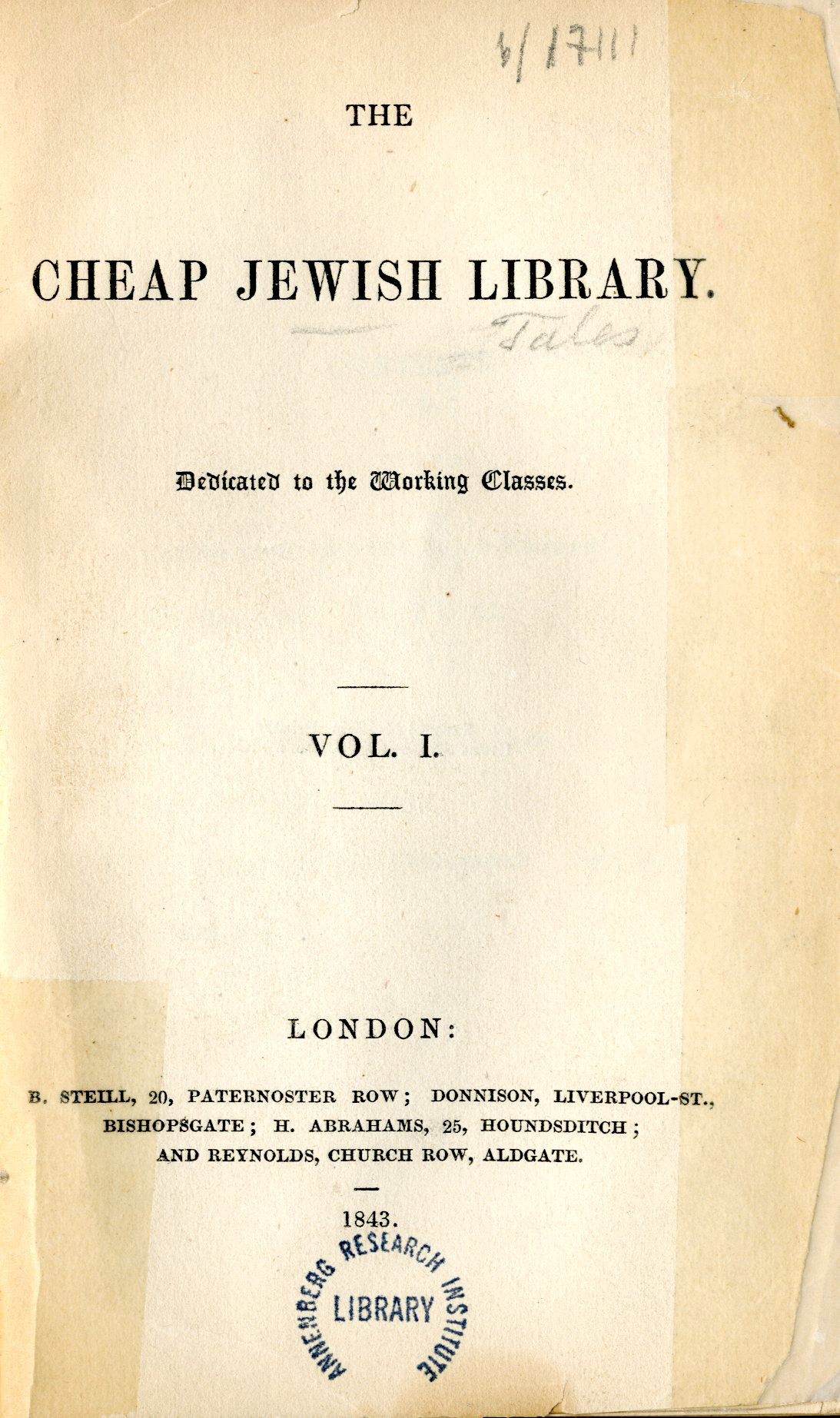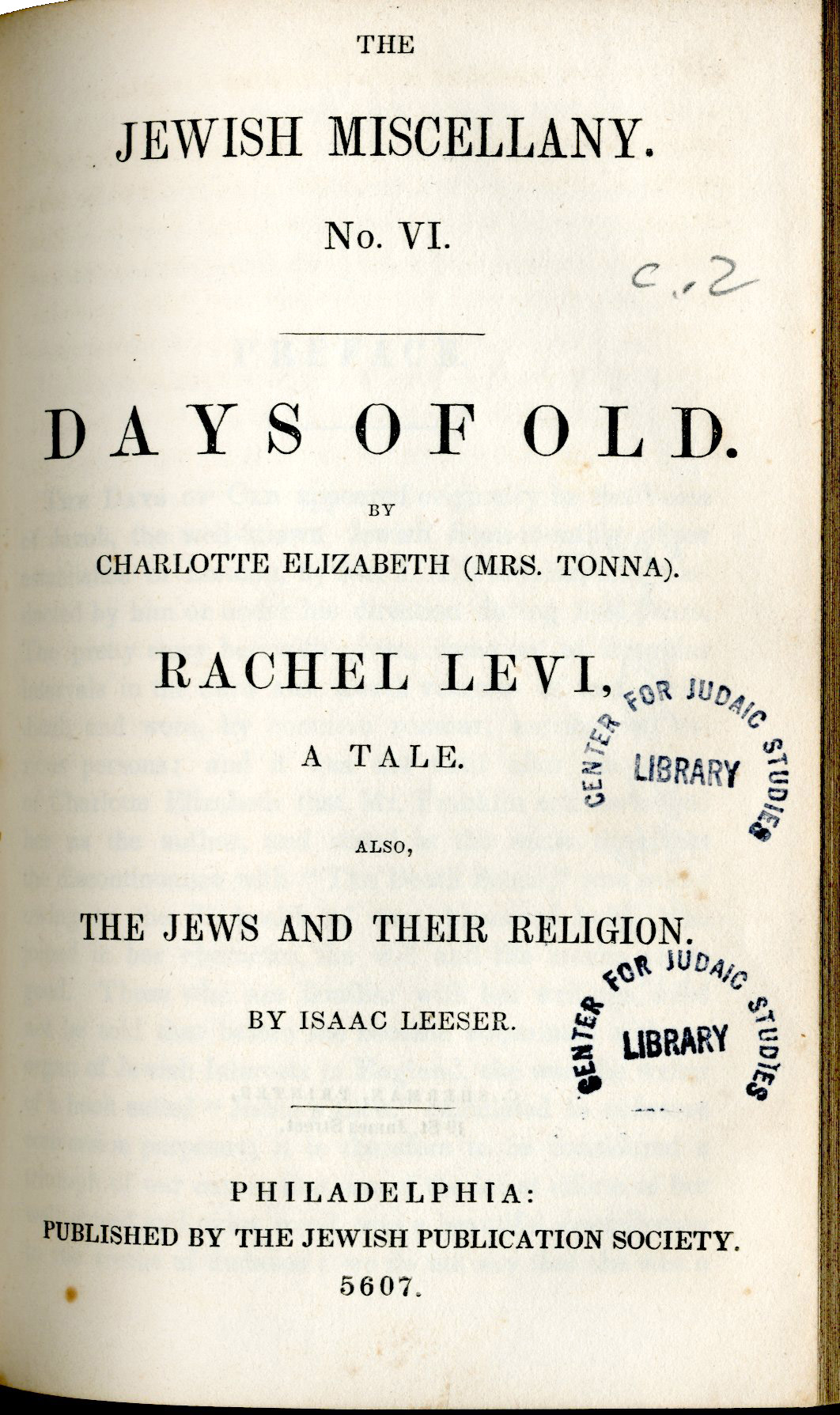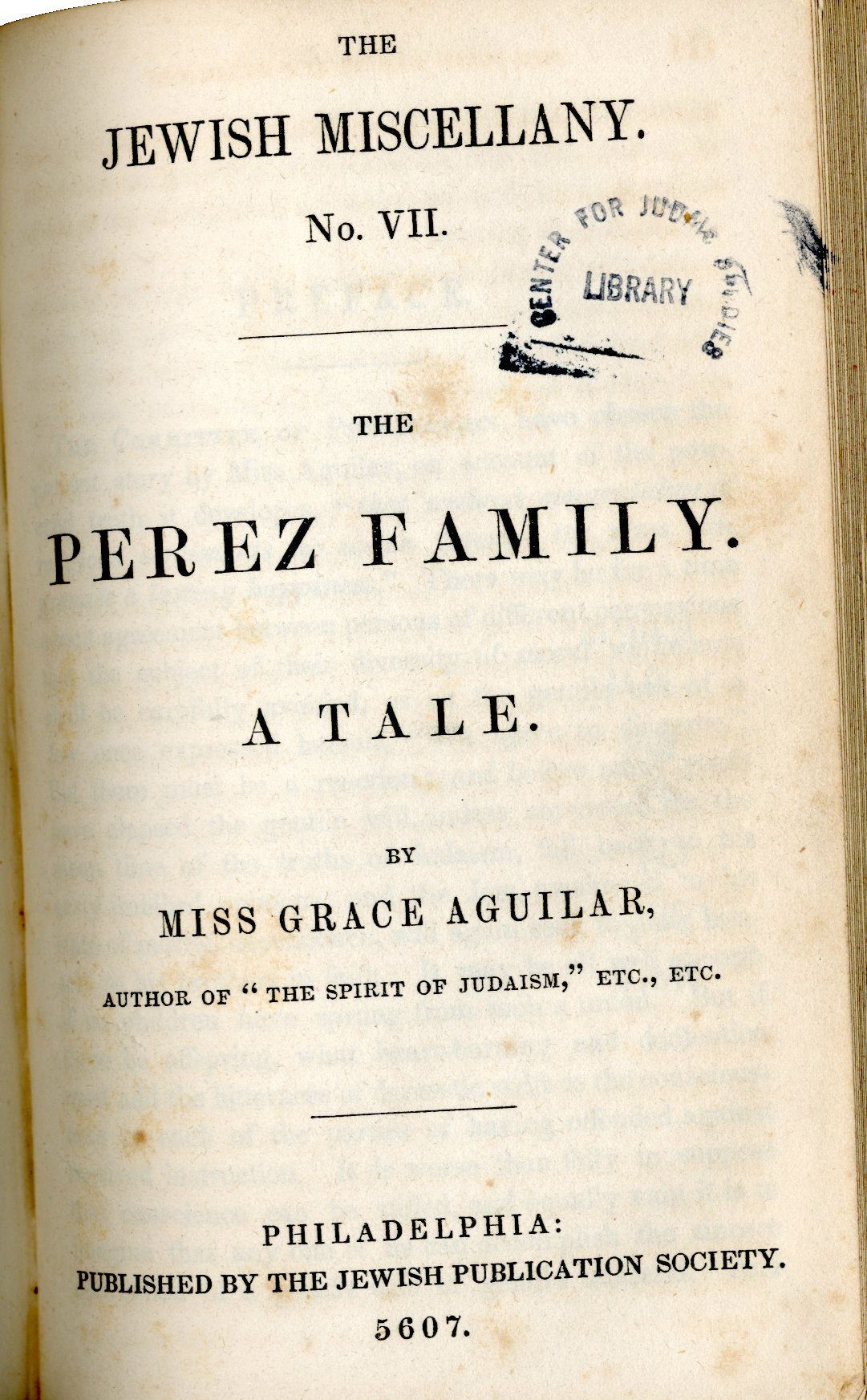In the middle of the nineteenth century, publishers in the United States and England began to court a mass Jewish market, producing literature - newspapers, tracts, catechisms, novels, and Bibles - for distribution cheaply and in large quantities. This trend was partly a result of the falling costs of printing. Yet its initial driving impulse came from missionary publishers rather than Jewish sources. Christian Evangelicals were among the first to grasp the implications of mass publishing, skillfully utilizing the printing press to communicate with their followers and win new converts.
The scale and persistence of mission efforts to supply Jews in America and England with their literature galvanized a Jewish response. While this response was undoubtedly defensive, it also reflected a new awareness of pent-up demand among Jews for books, tracts, pamphlets, printed sermons, and Bibles.
The Cheap Jewish Library - the name echoed the immensely popular evangelical Cheap Repository Tracts - was started and subsidized anonymously by Charlotte Montefiore and her sister Louisa de Rothschild, daughters of the aristocratic Jewish cousinhood, in London in 1841. (David Aaron de Sola, the hazan at Bevis Marks handled the practicalities of publication.) Single-page tracts were sold for a penny - tantamount to giving them away - with the intention of reaching the "humbler classes" to provide "instruction by means of interesting tales."
The cheap tracts were intended to rival the flood of moralistic material that gushed from the presses of the interdenominational Religious Tract Society and the Society for Promoting Christian Knowledge. These and other publishing houses produced millions of tracts annually, saturating the reading public with a ceaseless tide of uplifting tales and exhortations that conveyed lessons in Christian faith and virtue. While Jewish writers had produced plenty of polemical anti-missionary works before the 1840s, the mass produce pamphlets produced under the Cheap Jewish Library imprint contained a more subtle counter conversionist agenda.
Like their Christian counterparts, the tracts tended towards saccharine stories, often barely concealing a core of "doctrinal information," Biblical and Jewish history. The tales were written by a roster of writers that included Grace Aguilar. Her serialized Perez Family, for example, depicted the evil consequences of irreligion and intermarriage. The patrician project also imparted "practical lessons for the everyday life": thinly disguised lectures on hygiene, decorum and comportment. The Cheap Jewish Library proved far more palatable on both sides of the Atlantic than some of the rival series produced under Jewish auspices. Isaac Leeser was an early and enthusiastic supporter of the series. His Jewish Publication Society, founded in Philadelphia in 1845, reprinted tracts from the Cheap Jewish Library under the Jewish Miscellany imprint.


